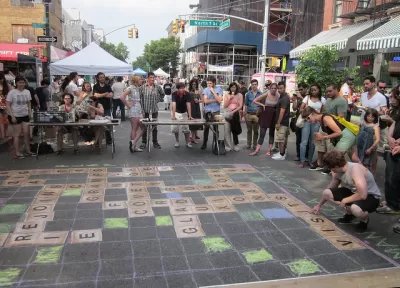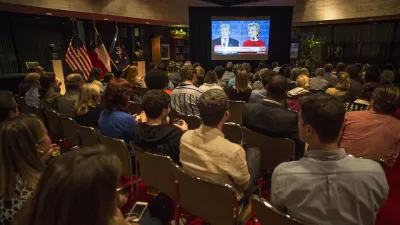One of the few mentions of cities during the second presidential debate came when Donald Trump described the states of "inner cities" in the country. The explanation didn't sit well with some experts.

Republican presidential candidate Donald Trump described inner cities as "a disaster education-wise, jobwise, safety-wise, in every way possible" during the second presidential debate, inspiring criticism from multiple experts on contemporary urbanism.
Emily Badger, for instance, debunks Donald Trump' mention of "inner cities" from several angles:
"Inner city," in short, is imprecise in describing today’s urban reality. It captures neither the true geography of poverty or black America, nor the quality of life in many communities located in central cities.
To prove the pint that neighborhoods previously thought of as "inner cities" are now performing very well economically, Badger cites a recent analysis by researchers at the Federal Housing Finance Agency, which "found that home values have risen faster in the heart of big cities than anywhere else in the country over the last 25 years, a sign of their turnaround and a trend Mr. Trump, as a real estate developer, is likely to be aware of."
Kristen Jeffers has also written a critique of Trump's "inner cities" word choice, explaining the concentric city model and its importance to planning and development in the process.
FULL STORY: Actually, Many ‘Inner Cities’ Are Doing Great

Planetizen Federal Action Tracker
A weekly monitor of how Trump’s orders and actions are impacting planners and planning in America.

Maui's Vacation Rental Debate Turns Ugly
Verbal attacks, misinformation campaigns and fistfights plague a high-stakes debate to convert thousands of vacation rentals into long-term housing.

San Francisco Suspends Traffic Calming Amidst Record Deaths
Citing “a challenging fiscal landscape,” the city will cease the program on the heels of 42 traffic deaths, including 24 pedestrians.

Defunct Pittsburgh Power Plant to Become Residential Tower
A decommissioned steam heat plant will be redeveloped into almost 100 affordable housing units.

Trump Prompts Restructuring of Transportation Research Board in “Unprecedented Overreach”
The TRB has eliminated more than half of its committees including those focused on climate, equity, and cities.

Amtrak Rolls Out New Orleans to Alabama “Mardi Gras” Train
The new service will operate morning and evening departures between Mobile and New Orleans.
Urban Design for Planners 1: Software Tools
This six-course series explores essential urban design concepts using open source software and equips planners with the tools they need to participate fully in the urban design process.
Planning for Universal Design
Learn the tools for implementing Universal Design in planning regulations.
Heyer Gruel & Associates PA
JM Goldson LLC
Custer County Colorado
City of Camden Redevelopment Agency
City of Astoria
Transportation Research & Education Center (TREC) at Portland State University
Jefferson Parish Government
Camden Redevelopment Agency
City of Claremont




























